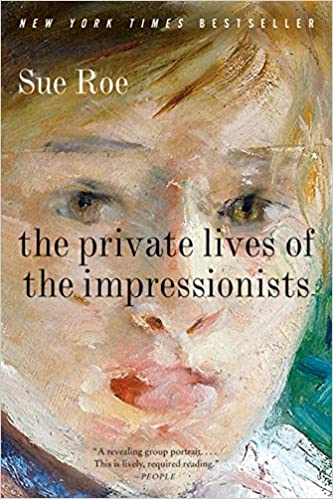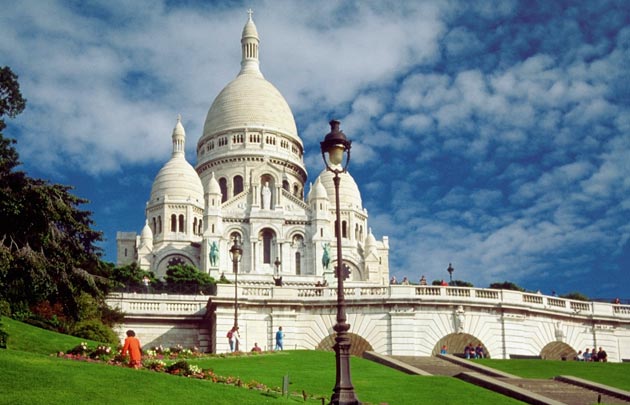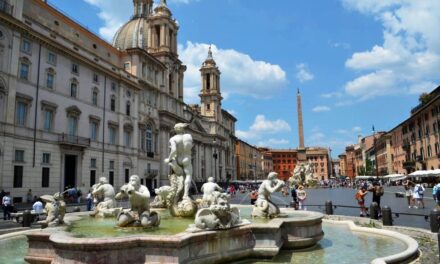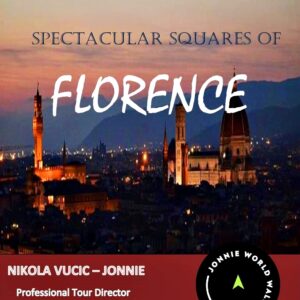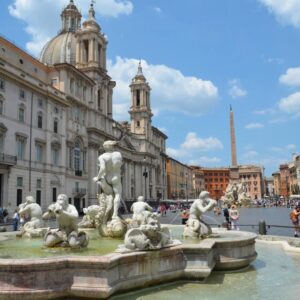Monmartre – The artistic nest of Paris
Rue Norvins with Sacre Coeur Basilica kiplingandclark.com
Places like Montmartre in Paris are among those rare time keepers. It captures and preserves creative spirit of the past times. Montmartre’s magic is brilliantly presented to modern generations on the authentic stage of its streets, squares and hidden corners.
While Rome has its iconic Trastevere and Berlin, its famous Nikolaiviertel district, Paris opens its heart through Montmartre. It draws you instantly into bohemian, intriguing and inspirational world of arts which simply you cannot resist. “This is a place with more than a character, district with a soul, quarter where I feel like at home”, are just some of the impressions of explorers and globe trotters whenever they are face to face with Montmartre in Paris.

Painter on Montmartre 1958. Pinterest.com
Montmartre’s past time
Montmartre Hill, located north from the Seine river, steps out from a regular layout of a city district, but precisely its irregularities are the ones making it a colorful countryside town in the middle of mighty French capital. In ancient Roman times, Paris was called Lutecia. It included a temple dedicated either to Mercury or Mars on the top of a hill. Today, this is the heart of Montmartre in Paris, which tells a story on early Christianity period in the future capital of France. Around mid III century AD, persecution of Christians was in its full rage. Among many, first bishop of Paris, St. Denis was brutally tortured and finally decapitated on the top of the hill, after which, by tradition, he took his head and walked to the north reaching a place where magnificent St. Denis Basilica stands today. From that moment on, holy place of his martyrdom becomes mountain of martyrs today better known as Montmartre.

Sacre Coeur dome view france-justforyou.com
Turbulent times continued even during XIX century when rebellious temper of locals here was bringing both suffering and pride. Almost as a town for itself, Parisian Montmartre was slowly growing, but keeping its wonders and charm so perfectly that when the time came for great minds of Impressionism to show, Montmartre was ready. Great artistic rebels like Degas, Sisley and Pissarro started to change perspective of arts leading it to artist’s pure impression deeply rooted in every part of Montmartre even today.
artistic treasures of Montmartre in paris

Monmartre cemetary -detail www.pinterest.com
Leaving Place de Clichy and dynamic Pigalle, red light district of Paris, try to stroll Rue Caulaincourt leading you just above the legendary Montmartre Cemetery. Acting as an open-air museum it is a final resting place of genius souls like composer Hector Berlioz, Edgar Degas with his paintings of magical ballet dancers , writers Alexandre Dumas son and Stendhal and a charming lady can-can dancer La Goulue, immortalized on famous Moulin Rouge poster designed by one and only Toulouse Lautrec.
It was Lautrec whose studio was just a minute ahead at 21 Rue Caulaincourt. With his dwarf appearance and relatively ugly face, due to numerous health problems in his childhood, this man had the biggest heart in the world and a sensibility to feel bohemian Montmartre vibe of the late 1800s like no one else. His bright studio on the second floor, which he used between 1886 – 97 was close enough to the epicenter of Montmartre, where cabaret shows, its red lights, dark corners and smoke of cigarettes were just perfect for deep impression from Lautrec.

Tolouse Lautrec: Chat Noir Cabaret Poster pinterest.com
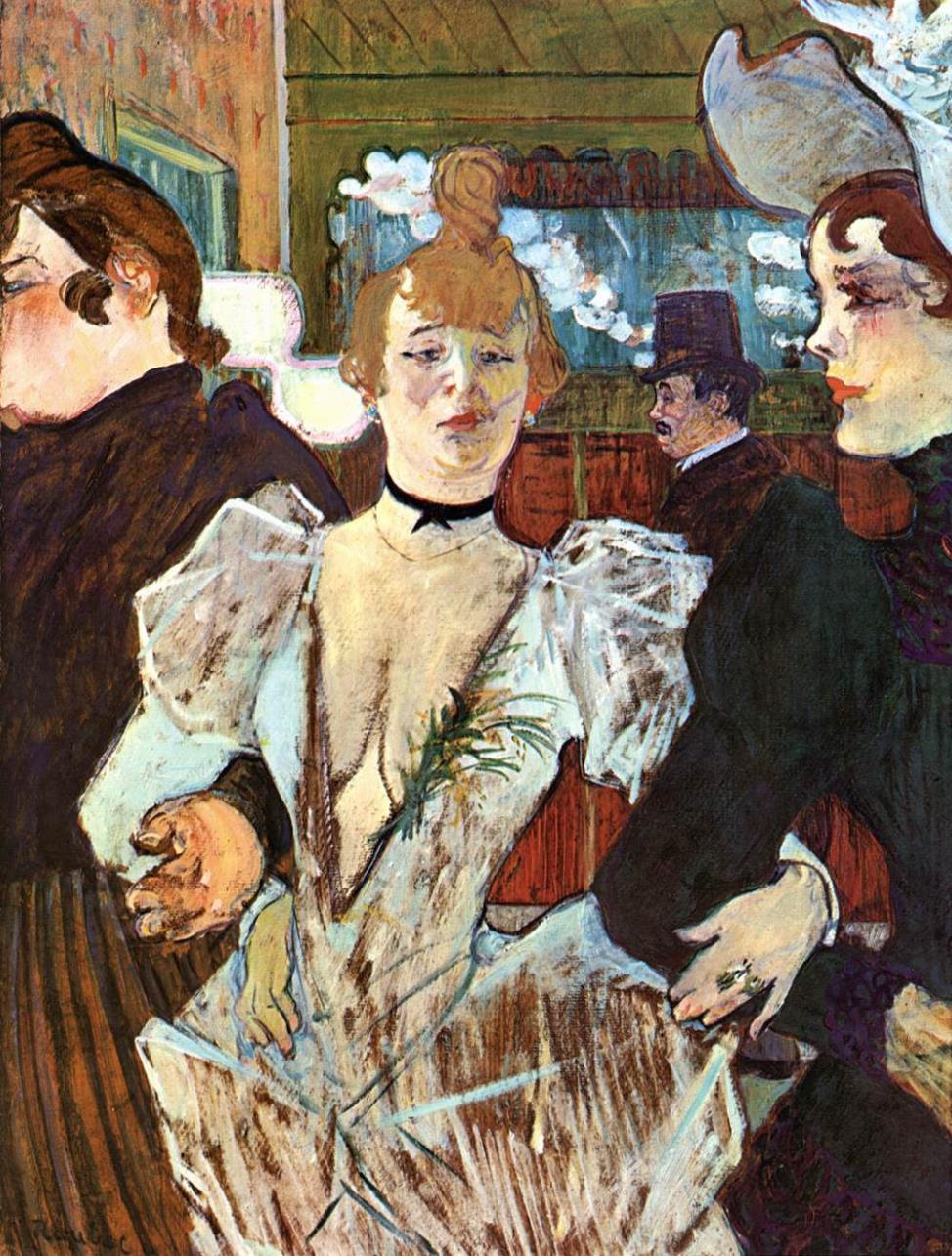
Toulouse Lautrec: La Goulue Entering The Moulin Rouge www.researchgate.net
From this studio most of the best known Moulin Rouge posters, as well as the portrait of Vincent Van Gogh emerged. Just a few minutes walk from the studio, you can reach idyllic Rue Lepic with late XIX architecture and wooden door at number 54. If you knocked on it in 1886 maybe Theo or Vincent Van Gogh would open to greet you. It was here, on the 3rd floor, where Van Gogh brothers lived for two years. During this period Theo was doing what he did the best – art dealing, while Vincent’s friendship with Lautrec, Monet and Gauguin brought the light of impressionism to his distinctive style.

Moulin Rouge Cabaret bluefox.travel
If you need a break before walking up to Montmartre hill, choose authentic Le Relais de la Butte (Inn of the hill), restaurant on top of Rue de Ravignan. While tasting delicious escargots, or dipping French bread in a sticky perfect gravy of beauf burgignon, just think of art history you are bringing to life here. This restaurant formerly known as Chez Pere Azon (Dad Azon’s Inn) was a unique cantine where impoverished artists still willing to prove their talent could eat while Mr.Azon would accept payment in paintings!!!
Can you imagine seeing Modigliani or Picasso finishing their meal here, bringing their drawings and paintings directly on the street, and if you are lucky enough to pass next to them, you could get some of their works for just a few dollars. Those were good old times of Montmartre, when passion and hope of introducing new styles was at its peak.
Continue walking up reaching again Rue Lepic and passing amazingly preserved XVIII century windmills owned by a noble Debray family. There was no chance to miss famous “Moulin de la Galette Cabaret “with a nice shady park, like a promenade between lower and upper windmill, and a beautiful dance hall. Fame of this place attracted all Parisian aristocracy and inspired Renoir for one of his greatest masterpieces: “Dance at Moulin de la Galette”, where colors, dancing and cheerful faces of Sunday afternoon in 1876. shows spectacular atmosphere.

Auguste Renoir: Ball at Moulin de la Galette wikipedia.org
And now you are just about to enter the heart of Montmartre strolling Rue Saint – Rustique with its number 18 another iconic cafe – La Bonne Franquette. Interior really reveals all the stories – a concert place, where by the late 1800s, you could hear discussions and friendly chats of Cezanne, Monet, Degas and Renoir, or evetually see Toulouse Lautrec and Van Gogh so well entertained, drinking their last glass of terribly strong “The Earthquake” – favorite Lautrec’s cocktail made of cognac and absinth.
Busy street Rue Norvins, loaded with crêperies, small nicely decorated bars, and sounds of an old piano lead you to bohemian Place du Tertre (large square). You’ll be amazed by the energy here, with kind waiters, traditional, slightly overpriced local cafes and restaurants, and a pure symbol of this vibrant spot – artists willing to draw your pretty portrait with a charcoal stick on a paper, for around 35$ a piece. Many of them are genuine, born Parisians, proud for what they do for decades, well educated in arts. Others are nothing more but average amateurs, coming from different parts of Europe trying to adopt some of this pretty charm and tradition of Place du Tertre.
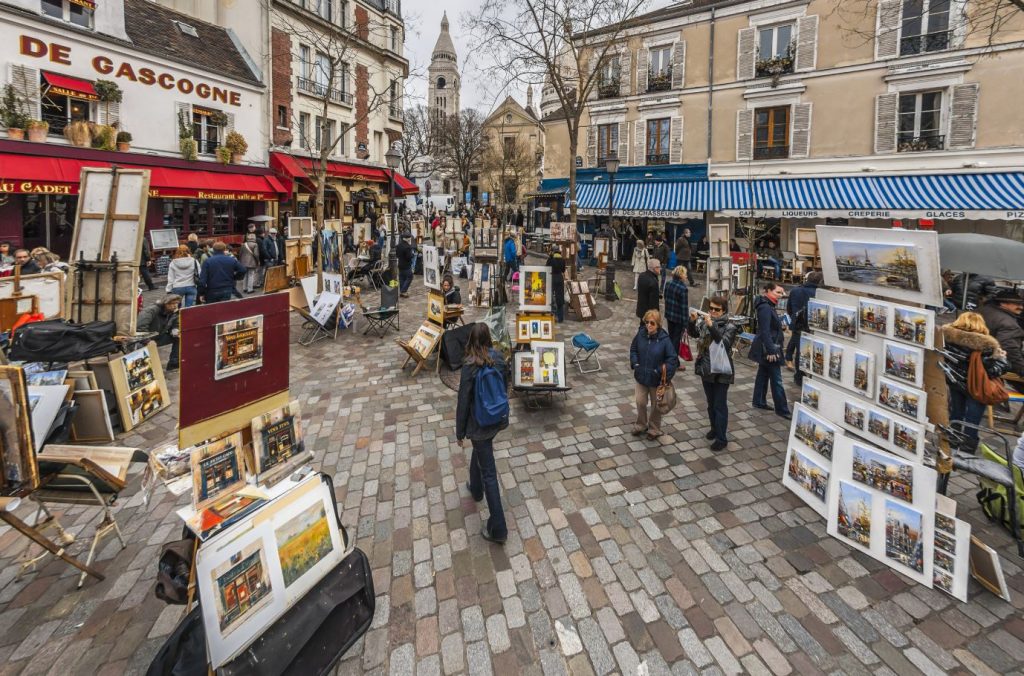
Dynamics of Place du Tertre opentourparis.com
From here you can choose a minute walk to Espace Monmartre, and dive into the imaginative surrealist world of sculptures and engravings by Salvador Dali, or just keep straight and admire the oldest pointed arches of Paris inside St.Peter on Montmartre church dating back from 1147. Nearby, in Rue Cortot, is Montmartre Museum with it’s lovely garden and collection of paintings, prints and posters signed by Suzanne Valladon, Lautrec, Modigliani… Specially posters became outstanding symbols of that decadent, but bohemian time, when in 1881. legendary Chat Noir (black cat), the first Cabaret was opened. Today, souvenir posters glorifying Montmartre’s historic entertainment are almost everywhere.
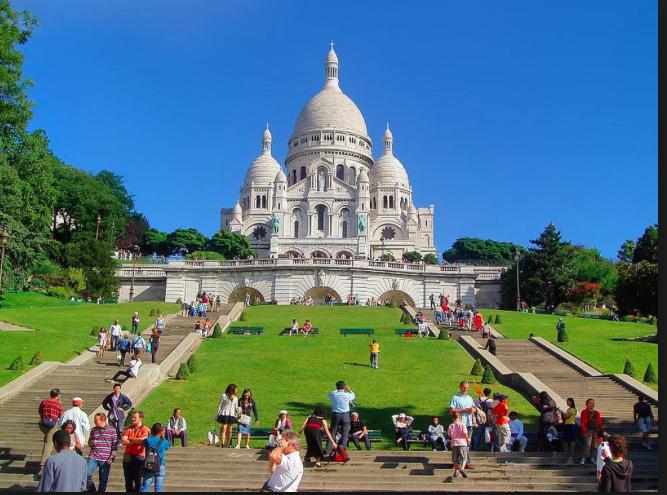
Basilica of the Holly Heart (Sacre Coeur) www.booking.com

Roofs of Paris with Montmartre hill in the distance
earth-photography.com
Opium of colors, voices, smells and flavors will be interrupted for a moment by magnificence of Montmartre’s white and shining “crown” – Sacre Coeur Basilica (Basilica of The Sacred Heart). Absolute emblem of Parisian hilly skyline, emerged just after the industrial revolution and Franco – Prussian war in 1870., when Catholic church was far from its previous glory. Need for a rebirth was present, funds were raised, and talented architect Paul Abadie was ready for the project in 1876. Striking mosaics showing devotion to the sacred heart decorate spacious interior, while mix of neo Romanesque and neo Byzantine style shape its facade topped with elegant pointed domes. Just under the highest point of the bell tower rests 19 tons heavy bell, nick named “La Savoyarde” , because having a bell cast in Savoy’s city of Annecy in the XIX century was a pure privilege.
Two bronze statues, as proud guardians of this temple of Christian faith, represent, maybe the most remarkable figures of French history: King Luis IX and Joanne of Arc, absolute symbols of courage, national consciousness, pride and prosperity. Before taking flights of steps and terraces down the hill or using short funicular for a price of a metro ticket, please wait for a moment at the top. Glorious Sacred Heart Basilica will be your background, while the rest of Paris, until your sight allows you to reach – that view will be your world to explore.
Embracing the moment, just remember you are on the top of legendary Montmartre, an incomparable nest for creative minds, bohemian village in the middle of Paris which existed for arts and deepest human impression.

Place du Tertre goway.com
Ready to explore more?
♣
Ready to explore exciting stories from private lives of the most famous Ipressionism painters? Pages of this book reveal more than you expect…



